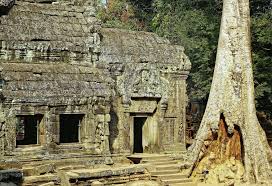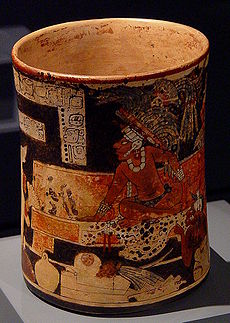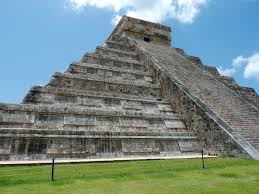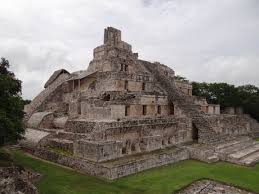The Maya area encompass the Mexican states of Tabasco, Yucatan, Campeche, Quintana Roo, and Chiapas, plus adjacent Belize and most of Guatemala, especially the Peten (El Peten) and Quiche (El Quiche). Portions of El Salvador and Honduras are also within the greater Maya area.

Belize clearly lay in the Maya heartland: not only are some of the earliest sites, like that of Cuello in Orange Walk, found in the country, but the recent discovery of glyphs at Caracol, Cayo District, apparently portraying a military victory over Tikal suggests that some of the Belizean centres were supreme in the region.
A more recent concept of Mayan archaeology started to grow about 40 years ago. This type of archaeology believes that the Maya had a highly developed but brutal civilization, in which wars were fought over power and territory in a cast system, where slaves were forced to build temples for their polytheistic priests and kings and an elite ruled over the poor.
Importance of Flowers Ceramic
The ancient Maya used ceramic vessels to burn incense, mostly for purification purposes. Numerous pre-Hispanic tombs have been discovered in Jaina(the Statuettes of Jaina), a small island off the coasts of Campeche (Mexico). In keeping with Maya tradition, the dead were buried with various utensils, ceremonial objects and, above all, small clay statuettes.

The Maya world was filled with sacred flowers. Flowers with gorgeous visual impact and also with potent chemical impact and some flowers which were simply edible. Indeed there are so many Maya artifacts that show flowers that to understand Maya religion and culture a lot of research is conducted.

Cerros(in maya) was a thriving community in the Late Formative Period due to its location on the circum peninsula trading route. A fishing village for its first 300 years, Cerros covered about seven acres and consisted of approximately 38 pole and thatch buildings which would have housed approximately 500 people. Occasionally built on low clay platforms, these huts were rethatched every 30 years much as they are today.
Iconography Anthropology
Scholars who study art history of the Maya area usually practice what is known as iconography, the study of meaning in art. Aesthetics, connoisseurship, style, and other aspects are also included in art history.

Archaeologists who work in the Maya area are trained in anthropology, social anthropology and cultural anthropology, and not really in art or art history. Thus art appreciation is a rare sub-speciality in Mesoamerican studies. A person who devotes themselves to the study of anything having to do with the Maya is known as a Mayanist.
|






